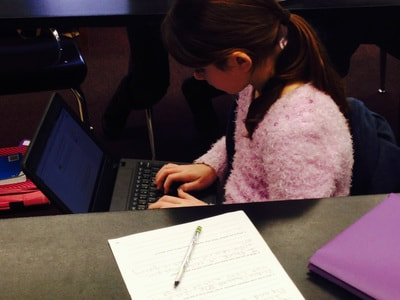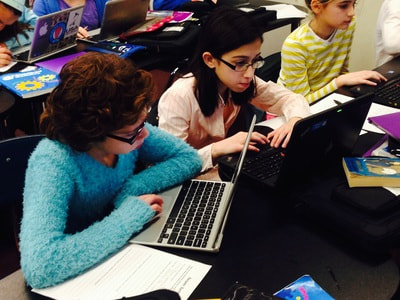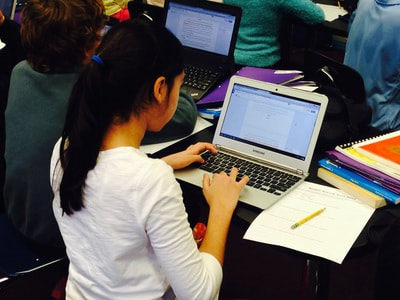Originally published on my blog EngagingReadersDigitally.com on 2/5/2014

February 5, 2014 is Digital Learning Day. Sponsored by the Alliance for Excellent Education, Digital Learning Day is a celebration of how effective application of digital tools and resources can make a positive impact on student learning.
In thinking about how to celebrate the day in my classroom, I realized that true digital learning is less about one-off activities, but rather about changing the culture of how technology can be used to impact learning.
So what did we do? Actually, it was a pretty typical day. My students participated in the NaNoWriMo Young Writers Program in November and wrote a novel of at least 4,000 words. We put our stories to rest in December and last week, pulled them back out to start the work of revision.
Last week, they did a full read-through of their work using a cool text-to-speech Chrome extension called Read and Write for Google. Once installed, it drops a toolbar in Google Docs that allows students to have their work read to them with sentence level highlighting. While listening, they marked places they thought lacked detail or needed work.
In thinking about how to celebrate the day in my classroom, I realized that true digital learning is less about one-off activities, but rather about changing the culture of how technology can be used to impact learning.
So what did we do? Actually, it was a pretty typical day. My students participated in the NaNoWriMo Young Writers Program in November and wrote a novel of at least 4,000 words. We put our stories to rest in December and last week, pulled them back out to start the work of revision.
Last week, they did a full read-through of their work using a cool text-to-speech Chrome extension called Read and Write for Google. Once installed, it drops a toolbar in Google Docs that allows students to have their work read to them with sentence level highlighting. While listening, they marked places they thought lacked detail or needed work.
Our Digital Learning Day activity was to work in groups of three or four to share their stories and give feedback to each other. Yes, we were using technology, but the work was not about the tools, it was about the thinking and collaboration. In our classroom, student use of technology, such as Chromebooks and Google Apps, is merely a backdrop. The tools have allowed a culture of critical thinking, creativity, and communication to flourish in new ways.
At one point, I noticed that a few students had large blocks of text highlighted yellow. I pointed out that in commenting, they should only highlight the minimum text necessary to direct their partner to the section to which they are giving feedback. One student responded, "No, one person didn't highlight the whole paragraph, that's just several comments from different people about the same paragraph."
Digital Learning Day is a great event and one that hopefully gives more students access to the power of digital tools for learning. The challenge for us is to find ways to expand upon it so that technology integration becomes invisible and seamless. When that happens, content and processes of learning can move to the forefront. In that sense, I'm striving to make every day a "digital learning day."
At one point, I noticed that a few students had large blocks of text highlighted yellow. I pointed out that in commenting, they should only highlight the minimum text necessary to direct their partner to the section to which they are giving feedback. One student responded, "No, one person didn't highlight the whole paragraph, that's just several comments from different people about the same paragraph."
Digital Learning Day is a great event and one that hopefully gives more students access to the power of digital tools for learning. The challenge for us is to find ways to expand upon it so that technology integration becomes invisible and seamless. When that happens, content and processes of learning can move to the forefront. In that sense, I'm striving to make every day a "digital learning day."



 RSS Feed
RSS Feed